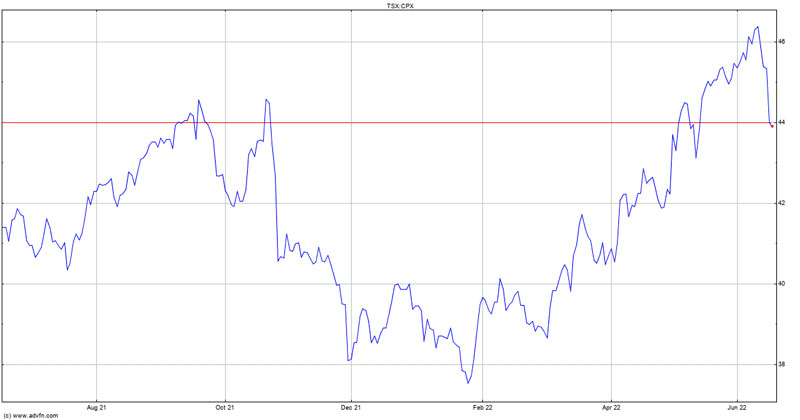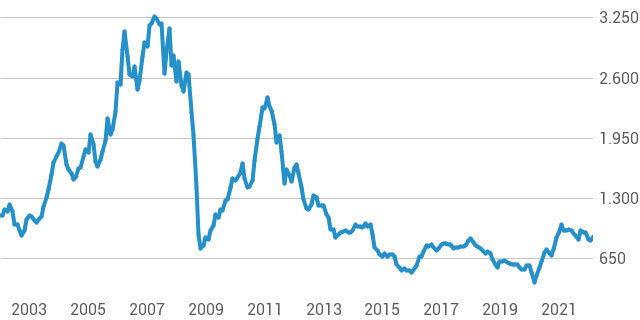All You Need to Know About: What is the S and P/TSX Composite Index?
Jan 05, 2024 By Susan Kelly
Introduction
What is the S & P/TSX Composite Index? TSX is short for the Stock Exchange, Canada's main stock exchange and the world's ninth-largest stock exchange based on its companies' market capitalization. S&P needs to stand for Standard & Poor's, an American financial services company. In 2002, S&P took over from the TSE 300, which had been in place since 1977. The S&P/TSX serves the same three main purposes as any other benchmark index: to give an easy-to-understand picture of how a country's public companies are doing, for their success.
The S&P/TSX is more flexible than its predecessor, the TSE 300, which had many firms in it—300, to be exact. It has about 250 of the roughly 1500 companies on the Toronto exchange. However, its companies make up about 70% of the exchange's market capitalization as a whole. So, when deciding which companies to include, it's clear that bigger is better. To be part of the Index, a company needs to make up at least.05 of the full Index, and those with a higher market capitalization are given more weight when figuring out whether the Index goes up or down. Membership is not permanent; companies can join or leave the Index depending on their market capitalization, how often their stock trades, and how much cash they have. In 2015, for instance, the Standard & poor added 16 new companies and lost even more.
Understanding the S&P/TSX Composite Index
Standard and Poor's comes up with the S&P/TSX Stock Index (S&P). The broadest of the S&P/TSX index family includes about 230 to 250 of the 1,500 publicly traded Canadian companies listed just on Tsx (the ninth-largest exchange in the world). But these companies make up about 95% of the Canadian stock market and 70% of the entire market capitalization of TSX.
As of April 2022, the current overall valuation of the Index, measured in U.S. dollars, is more than $2.75 trillion. The financial sector, which includes banks, investment firms, financial services firms, and insurance companies, made up about one-third of the Index's members. Energy, materials, industrials, and telecommunications were also important parts of the Index.

S&P/TSX Eligibility Criteria
Companies that want to be in the S&P/TSX Stock Index should meet a set of rules about how liquid they are and how much money they are worth on the market. In particular, companies on the Index if the price of their shares stays below $1 for much more than a certain amount of time. Members must also ensure that their market cap stays at or above 0.04 percent of the Index.
Sufficient liquidity is the ability, too. Liquidity, measured by the total number of shares traded in the U.S. and Canada in the last 12 months divided by the number of float-adjusted outstanding shares at the end of the period, must be at least 0.50 for new competitors and at least 0.25 for existing constituents. When using Canadian volume only, stocks listed in two places must have a cash flow of at least 0.25 or 0.08 for existing members.
For companies to be shown, they must also be Canadian. Northern has a primary stock market listing on the TSX, files financial information and other disclosure papers with regulatory agencies, and has a "substantial presence" in the country. A "significant existence" is described as either having the head office or primary executive offices in Ontario or a large portion of fixed assets and revenues in the country.
TSE300 Composite Index
As a standard for the Stock Exchange, the TSE300 Composite Index was implemented for the first time in 1977. The Index had 300 companies in it for 25 years. The many firms included were set in stone, and the businesses included can be altered annually during an annual review.

Conclusion
The S&P/TSX Composite Index is a standard equity index that follows about 250 of Canada's biggest public companies. People use it to measure the health of the Canadian economy. It is similar to the S&P 500 Index in the U.S. For a company to stay in the Index, it must meet strict liquidity and market capitalization requirements. The S&P/TSX Composite Index is both a benchmark and an index that can invest. Individual investors can access it mostly through ETFs and unit trusts which track it.
-
 Taxes Oct 05, 2024
Taxes Oct 05, 2024Understanding Form 1099-C: A Complete Guide to Cancellation of Debt
Learn how to properly file Form 1099-C and understand its tax implications, including important steps, exceptions, and how to handle multiple forms.
-
 Know-how Jan 31, 2024
Know-how Jan 31, 2024Deciphering Plaid: A Comprehensive Guide to Its Functionality
Plaid Cash app is a fintech platform that facilitates secure data connections between financial institutions and apps, streamlining transactions. Click to read more.
-
 Mortgages Feb 28, 2024
Mortgages Feb 28, 2024Wintrust Mortgage: An Overview
Beneficial for those purchasing their first house as well as those looking for specialized mortgages such as building loans.
-
 Banking Nov 11, 2023
Banking Nov 11, 2023Top Four Credit Cards for Air Travel
With a travel incentives credit card, you can easily get airline perks even if you don't have a status. Although airline credit cards are often promoted as the top option for paying for airfare, this is not always the case. If you have loyalty to a certain airline or would want access to that airline's lounge, a credit card issued by that airline might be the best option for you.
